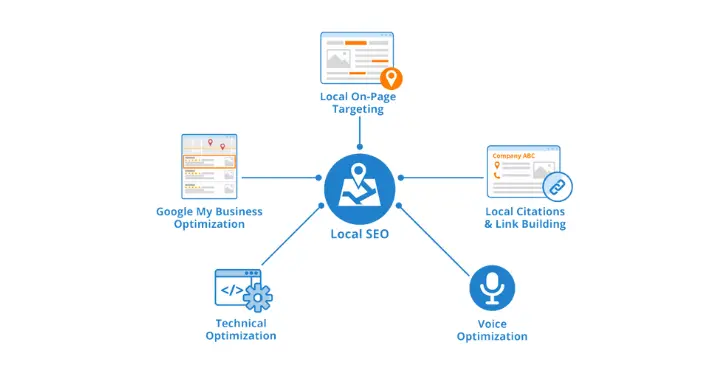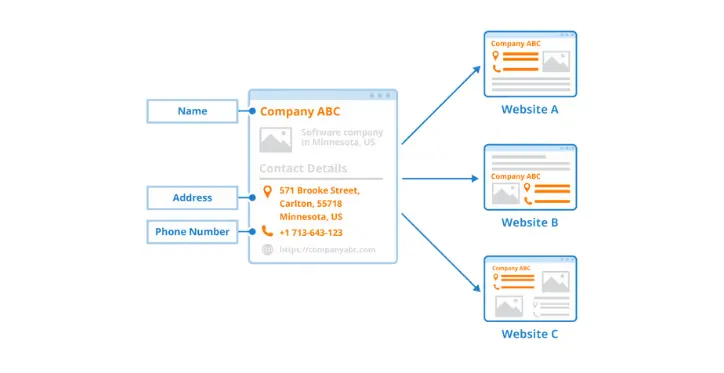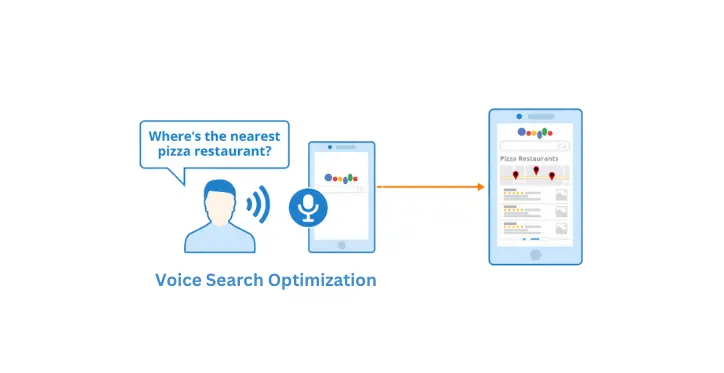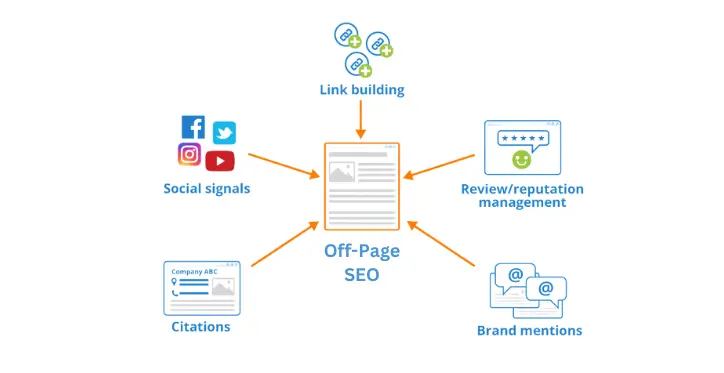10 Must-Do Local SEO Steps for Fast Website Traffic

Table of the content
Introduction
Do local SEO if you’re a business owner looking to generate customers in a short period. It’s the easiest and most significant targeted traffic generation method, and when you get it done professionally, it’s sure to push your website to the top on Google search results.
As a local SEO expert and founder of Digital Deep Tech, I have helped businesses gain visibility and generate sales through white label local SEO tactics.
In this section, I’ll take you through 10 must-do steps to get you traffic as fast as possible by leveraging local SEO. These steps assure a driving strong local SEO presence as well as attract intent-to-purchase local customers. Alright, let’s dive into actionable strategies that could put your business on the map.
10 Local SEO Strategies to Attract Fast Website Traffic
Step 1: Optimize Your Google My Business Profile
Most local businesses use GMB, but ignore it and miss potential rankings in the local search.
Can you imagine the scenario: you have a great business, but nobody finds you because your GMB profile isn’t optimized? Losing traffic, and worse, it is getting to the competition.
Local SEO Solution: Optimize your Google My Business profile. GMB is the heart of local SEO. There’s a lot to it, especially when you think about the importance of a Google My Business profile to your ranking on Google Maps and local searches. Make sure that your profile is totally filled out with right NAP details such as business name, address, and phone number.
- Local keywords such as “best roofing services in Sydney”
- Quality images related to your business
- Continue posting posts, offers, and events
- Feedback from customers, response
In recent times, one of my clients is a roofing business. It increased their traffic by 50% within three months after optimizing its GMB profile.
Sharing GMB posts regularly helps increase engagement, and keywords like “local seo business model” or “local seo and google my business” can increase your chances of ranking for related queries.

Step 2: Analyze Website Issues with an SEO Audit
You invest marketing dollars into it, and yet you do not know whether your website is locally SEO friendly or not. You are losing out to the competition as they have audited and corrected their local SEO deficiencies.
Solution: A local SEO audit will spot gaps and opportunities for improvement. To audit your own, pay attention to the following key areas:
- On-Page SEO: These must be checked to ensure that the title tags, meta descriptions and headers are correct and also optimized with local keywords. Examples would include “Local SEO means SEO for business in [city]” or “Local business website SEO.”
- Local keyword analysis: Are you targeting the right keywords for local search? Tools such as Google’s Keyword Planner might come in handy in figuring out whether you are using the most appropriate keywords: “SEO checklist for local small business websites” or “local SEO tips small businesses”.
- Technical SEO: Make sure your site is mobile friendly as well as loads very quickly. Those are two of the most direct issues related to improving your position in local searches.
- Backlink profile: Quality backlinks from local websites show Google that your business is relevant in your area.
An SEO audit will highlight what needs work, so you can focus your efforts in the areas most likely to make a difference.
Step 3: Target Local Keywords for Your Website
Using the wrong generic keywords or those incorrectly targeted means you won’t be drawing the right kind of local traffic to your site.
Imagine this-you are getting website visitors, but they are not converting into customers because they are not local. It is frustrating and your marketing efforts waste their value.
Solution: Local keyword research is vital. You need to utilize keywords that describe your location and services. Long-tail keywords such as “plumbing service near me” or “best restaurant in Sydney” will help target users who seek services in your locality.
Here’s how you do it:
- Use the tools and resources, such as Google Keyword Planner and Ubersuggest, to find the keywords related to the city or region that you have chosen.
- You must then incorporate the chosen keywords organically into your meta tags, headers, and content.
- You can include city names and services, such as “Digital Deep Tech offers SEO strategy for local business in Sydney.”
For instance, after we optimized our local keywords for the service pages of a client, within two months his local traffic was upgraded by 40%. All this is about relevance and precision.
Step 4: Create Quality, Location-Approved Content
Generalized content is not localized to outreach to the local customers, also failing in the locality searches.
Your content on your site could be great information, but if it doesn’t lend to more specific solving of a problem about your local audience, it really loses to any valuable traffic.
Solution: The concept of location-specific content works great well. Create blog posts or service pages that focus distinctly on the city, neighborhood, or region you’re in. Target questions and problems local customers have to address them in a way demonstrating that you understand their needs.
I often create location-specific guides. For example, “How to Choose the Best Local SEO Agency for Your Sydney Business.” This accomplishes two things: it opens up potential clientele and builds local rankings in search.
Step 5: Build Local Citations and Backlinks
Your website has no authority and thus not ranking high enough in local searches.
You may very well be doing everything right on your website, but without external validation in the form of backlinks and citations, your competitors will continue to outrank you.
Solution: Local Citations and Backlinks Boost your credibility. Citations are online mentions of your business name, address, and phone number, helping improve local search visibility.
Here’s how to get started:
- Get listed on high-authority business directories such as Yelp, Yellow Pages, and specific niche sites.
- Reach out to local bloggers or news outlets to feature your business.
- Partner with other local businesses for backlinks.
For example, I had helped a local pizza shop get backlinks from community food bloggers. The restaurant achieved ranking #1 for “best pizza in Sydney” within months.
Step 6: Improve Mobile-Friendliness for Local Search Results

Local searches account for an enormous majority of mobile users, yet your website has not been optimized for mobile devices.
Frustrating customers and losing sales is what happens if your website is not mobile-friendly. Google also penalizes non-responsive sites, affecting your rankings.
Solution: Ensuring that your site becomes mobile responsive is the key to reaping success in the world of local SEO. Here is why:
61% of mobile users are likely to contact a local business with a mobile-friendly site.
Google uses mobile-first indexing, so the mobile usability of your website is going to have a direct impact on how high you rank.
As a matter of fact, I’ve optimized one of my clients’ sites for mobile. And within one month of doing so, his traffic from local keywords increased by 30%.
Also, most of the local searches are voice-based. So optimizing the content for voice search using conversational keywords can give you an extra advantage.
Let's Discuss Your Project
Get a free one-month consultation and share your vision for digital marketing with us.
Step 7: Use Customer Reviews and Testimonials Now
Unless your business has adequate reviews, there isn’t any social proof for the exact business they are looking for.
Even though you may offer the finest services available, the customers might not move ahead with the decision unless they find enough reviews online. Too little review can greatly hound the credibility level of any business.
Solution: Encourage reviews from the customers and, at the same time, put up testimonials on your website. In addition to this, Google reviews help enhance the visibility of your business in local search results also. See what you can do:
- Ask to leave reviews via email after a service or a sale.
- Respond to positive and negative reviews.
- Host your reviews on your web page.
For instance, after working with a local salon, I developed a review strategy that upped their 5-star reviews by 80%. That then jumped them in the rankings, thus increasing more foot traffic to this business.
Step 8: Monitor Competitors and Adjust Your Local SEO Strategy

You do not know what your competitors are doing to have an edge in local rankings.
Lack of watching the competition often leads to missing chances to make your strategy better, hence getting ahead of them.
Solution: Monitor and know their competing strengths and weaknesses. Use instruments such as Ahrefs or SEMrush and see where their backlinks are coming from, what keywords your competitors target, and what type of content works for them.
For example, I helped a client surpass their competitor by identifying gaps in the competitor’s keyword strategy. We focused on long-tail local terms such as “local business seo software” and “seo agency for local business,” generating more traffic.
Step 9: Social Media and Local Outreach
You’re not socially interacting with your local audience on social media, missing an important piece of a significant source of traffic.
Social media is a platform that can be very easily viewed, and if you are not seen on social media, local customers may not even have a clue that your business exists. It is as if they are bonding with your competitors while you lose those crucial interactions.
Solution: Use available social media applications like Facebook, Instagram, and LinkedIn to engage the local audience. Post regularly regarding local events, promotions, and news so that your page is visible and relevant.
The clients frequently utilize the social media for community engagement and I have seen enormous results. In fact, one client increased their local following 300% after using Instagram to connect with customers based nearby.

Step 10: Monitor the Results and Improve Your Local SEO Strategy
Not tracking the local SEO performance can’t know what is working and what’s not.
You’re putting in all this effort, and you are not quite certain if your strategies are paying off. Unless you track progress, you’ll be missing on those vital opportunities for improvement.
Solution: Track the metrics of local SEO using Google Analytics and Google Search Console. Consider tracking traffic and keyword rankings to understand what works and where adjustments need to be made.
For example, analyzing the search traffic and adjusting the strategy is the way through which I could raise orders online from a local retailer to two times within six months.
Apply these 10 steps to build up your local SEO and get fast, relevant traffic to your business.

Conclusion
Mastering local SEO is the key to standing out in your community and attracting high-intent customers to your business. Optimizing your Google My Business profile, creating location-specific content, building local citations, and leveraging reviews are some of the important steps to drastically improve your online visibility. All the 10 steps above play a crucial role in elevating the presence of your local SEO, ranking higher, and attracting targeted traffic much faster.
Local SEO is a continuous process. Monitor your efforts, track your results, and adjust and optimize your strategy to stay on top of the curve. With consistent effort and smart tactics, your business can dominate local search results, resulting in sustainable and long-term growth. Ready to take your visibility to the next level? It’s time to put these into action today!
FAQs
1. What is local SEO?
Local SEO is getting your website optimized for location-based searches in order to attract more local customers by improving your ranking.
2. Why is Google My Business important?
Google My Business is a service that enables your business to appear in search for local terms and on Google Maps, making it easier for local customers to find you.
3. How long does it take to start seeing results from local SEO?
Generally, you should begin to experience improvements within 3-6 months, depending on what you do and what else is competing.
4. Can small businesses really compete in local SEO?
Yes, with target-local keywords, reviews, and relevant content, small businesses can really compete.
5. What is the difference between local SEO and traditional SEO?
Local SEO focuses on location-specific searches, while traditional SEO’s focus is on a broader, often national or global rankings.
6. How will I find local keywords for my business?
Use tools such as Google Keyword Planner and see what your competitors rank for locally.
7. Do reviews play a role in Local SEO?
Yes! Reviews are of great importance in creating trust and higher rankings with local searches.
8. Do I have to hire an SEO agency for Local SEO?
Many facets of local SEO you may handle yourself, but it will go much quicker and produce far better results if you hire an expert.
9. What is a local citation?
A citation refers to an online mention of your business’s NAP, including your name, address, and phone number on various websites and directories.
10. What are the best ways to generate local links?
Use local bloggers, new sites, and other business opportunities as partnerships, guest posts, or mentions.

About the Author
Deepak Sharma is the founder of Digital Deep Tech and a renowned SEO and digital marketing expert with over a decade of experience. Passionate about helping businesses enhance their online presence, Deepak specializes in creating SEO strategies that drive traffic and generate leads.




